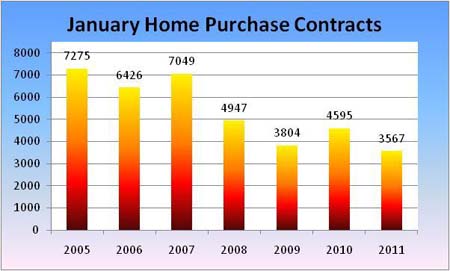From CNBC:
More Borrowers Underwater: Why We Should Care
Falling home prices at the turn of the year pushed more borrowers into a negative equity position, meaning they owe more on their mortgages than their homes are worth.
In Q4, 23 percent of borrowers nationwide, or 11.1 million, were holding “underwater” mortgages; that’s a collective $750 billion of negative equity, according to the latest survey from CoreLogic. That’s up from 22.5 percent, or 10.8 million, in Q3, again, thanks to falling home prices. To make matters worse, 2.4 million borrowers have less than 5 percent equity in their homes, deemed as “near-negative” equity.
…
So why should we care if the bulk of these underwater borrowers can still make their monthly mortgage payments? “Negative equity holds millions of borrowers captive in their homes, unable to move or sell their properties,” notes CoreLogic’s chief economist Mark Fleming. “Until the high level of negative equity begins to recede, the housing and mortgage finance markets will remain very sluggish.”
…
Negative equity will slow the pace of home sales, no question, but it will also provide more problems for policymakers and state and federal regulators. Right now the mortgage market is at the mercy of a huge potential settlement with the state attorneys general and a whole bunch of feds, part of which will be a push for principal write down on troubled loans. With negative equity continuing to rise, the principal write down argument gains strength. I spoke with Missouri state AG Chris Koster yesterday at a conference in DC:“I think principal write-down is the right way to go. Twenty to 25 billion dollars is a significant amount of money. The big question is are we talking about five banks, 15 banks who chip in on that fund? We don’t know the answer to that until we get through these negotiations, but we’re at the beginning of something serious that could be successful.”

